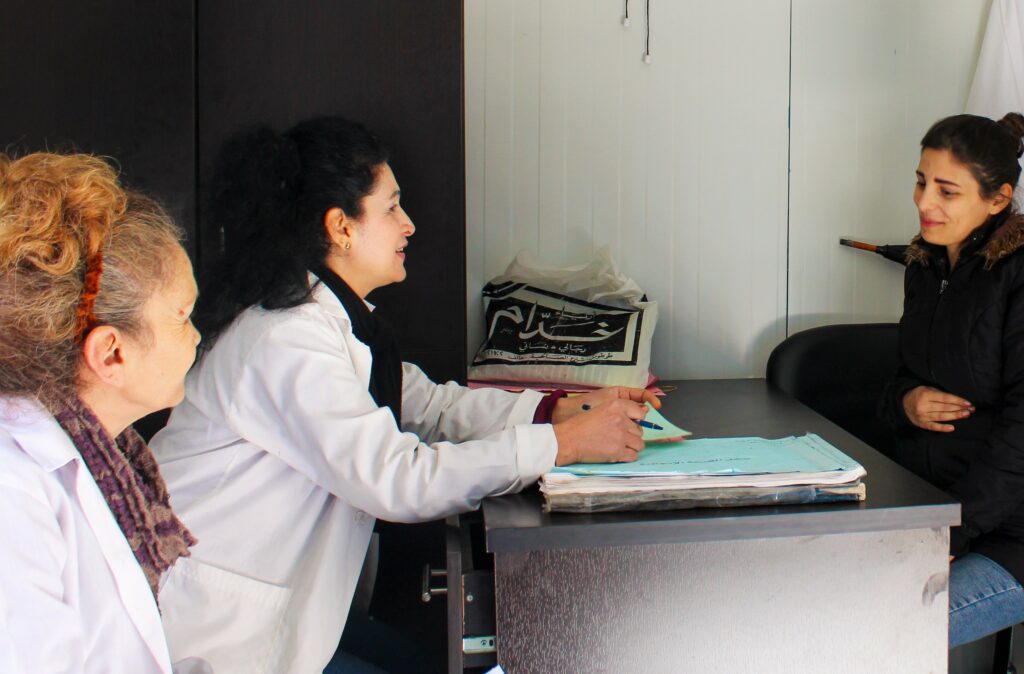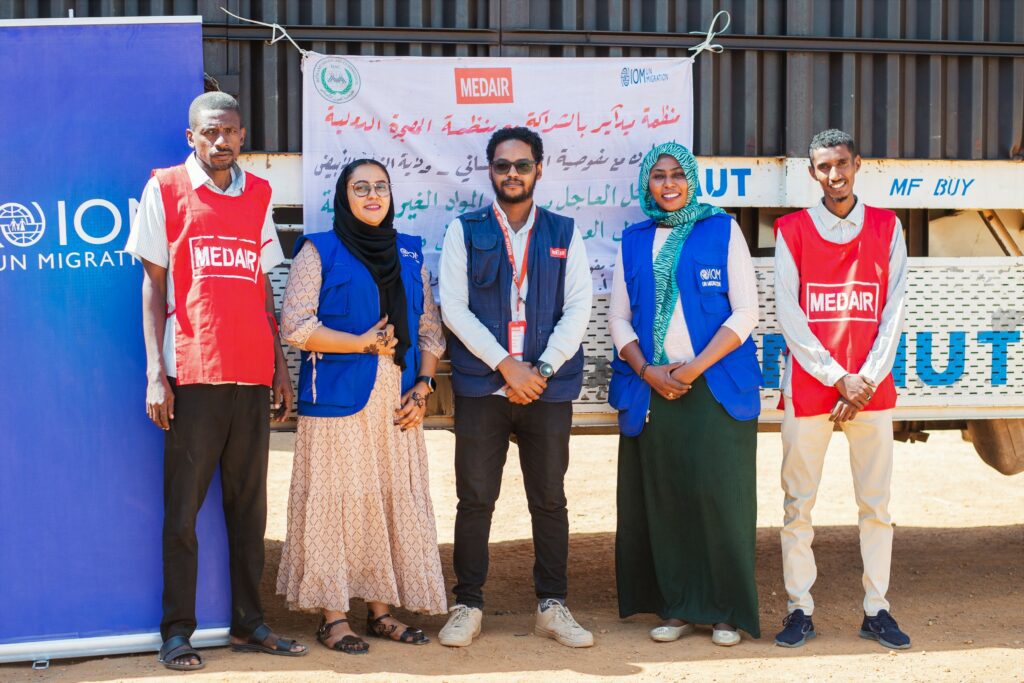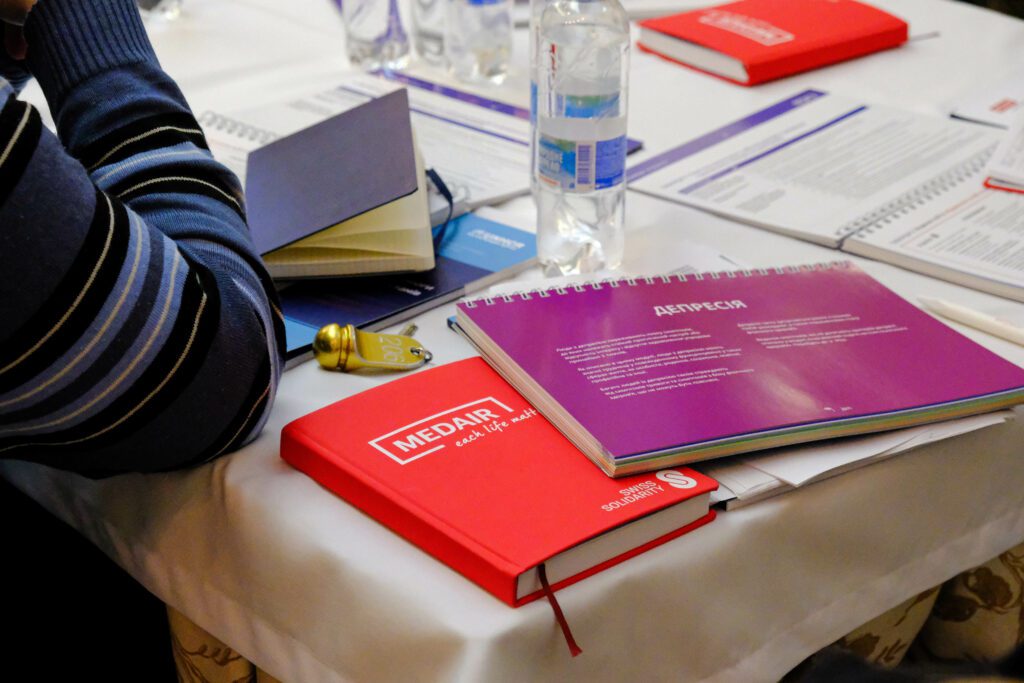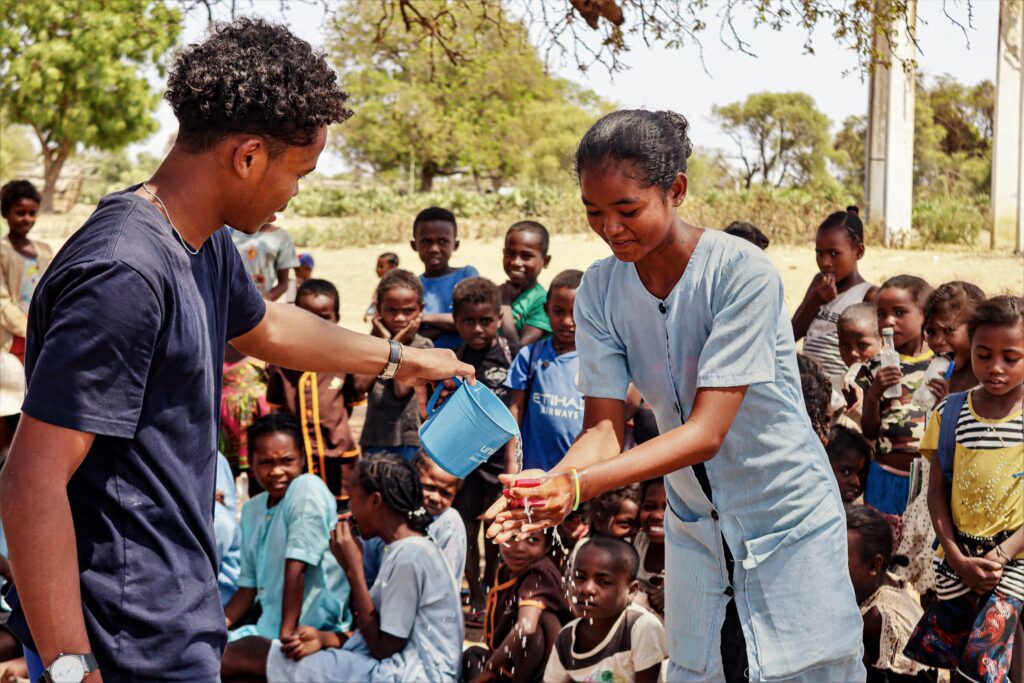Looking outward to the distant horizon, a long, flat line stretches across the land, separating the sky and earth as if you’re looking out at sea. In place of blue and roaring waves, a cracked, brown dirt meets the sky—seemingly, never ending. White tarpaulin structures line the space in-between. Tents as temporary housing for people who have sought refuge and safety within the arid land that surrounds. Around 23,430 people now live within Tunaydbah Refugee Settlement in eastern Sudan1.
Conflict brought each across neighbouring international borders.
Here, in Tunaydbah, people know they are safe from volatile and unpredictable conflict. Here, refugees know there are groups of people who are actively working to meet their needs and make life in tents more comfortable. Humanitarians join together to provide essential services, including health care, water and sanitation, showers, shelters, food distributions, and more.
Medair is among those responding to immense humanitarian needs as a result of a conflict that remains unpredictable.
What is predictable is that the arid land will resist absorbing water as yearly cycles of rain pours down. We can predict the impact of heavy rains, flooding, and high wind within the camp can cause tents and structures to collapse from unstable soil. We can predict that a flooded camp would inhibit access to essential services, and that stagnant water would contribute to water borne diseases and increase health threats.
The rain is imminent, but its destructive impact doesn’t have to be.
Disaster Risk Reduction (DRR) aims to minimize a disaster’s impact within communities—to reduce the severity of a threat.
It’s not always possible to prevent a risk entirely, but mitigation can make the impact less severe. To prevent the rains from damaging structures and affecting people within the Tunaydbah community, Medair worked with community members to build 29 kilometres of micro-drainage—to ensure water is quickly rerouted to a larger network of drainage systems. In Tunaydbah Refugee Settlement, drainage works through a network of canals; a series of small ditches that lead to larger, deeper canals for water to flow to the main, primary drains.
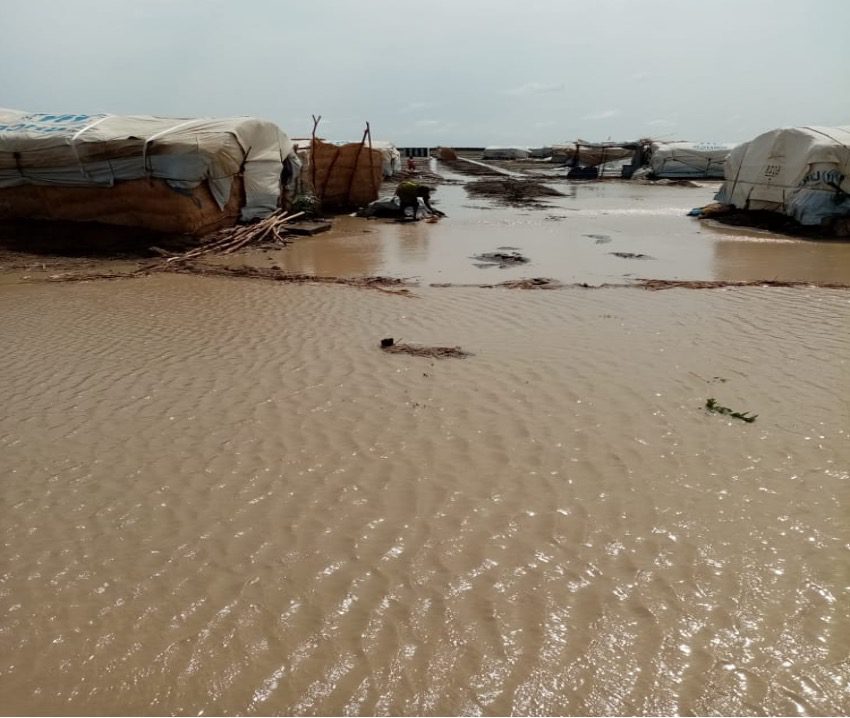
Tunaydbah Camp after May 2021 rainfall
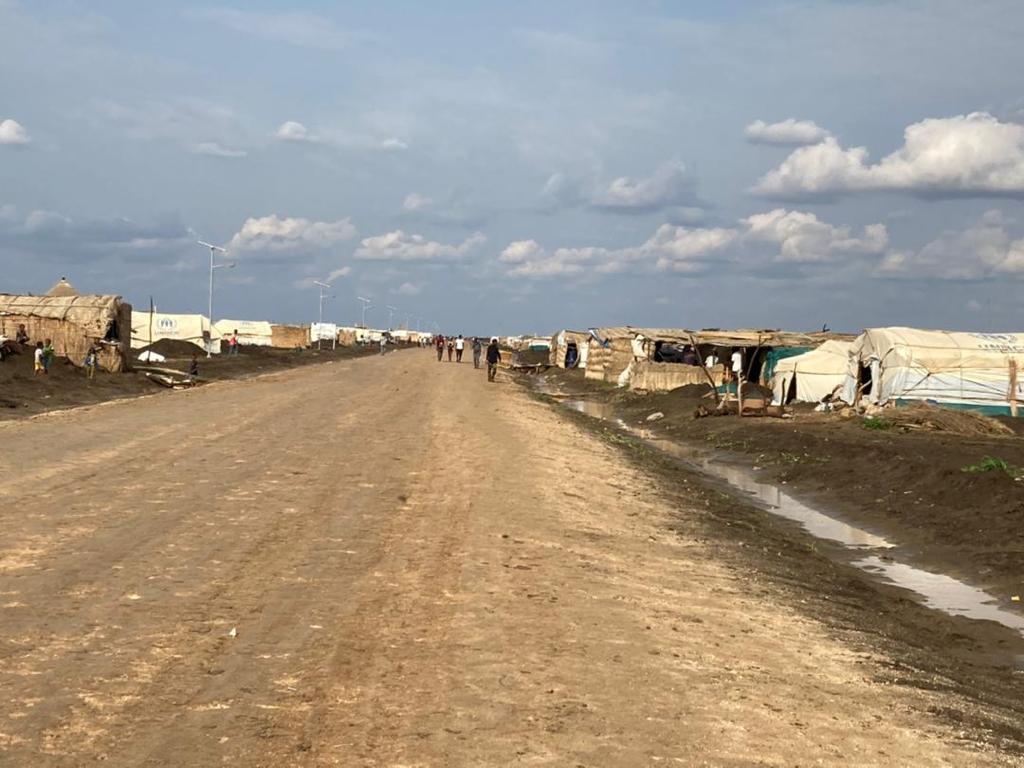
Tunaydbah Camp following rainfall in August, after micro-drainage was installed.
“Medair had a modest yet effective intervention at all levels,” says Patricia Gomez, Medair’s Senior Shelter & Settlement Advisor. “On a technical level, the micro-drains are well done, using sloping to ensure good drainage. On a community participation level, we worked directly with the community to ensure their support and feedback. When the heavy rains arrived, we saw the fruits of our efforts paid off: the water quickly evacuated the area, and the population was protected from the floods.”
Community involvement within DRR contributes to increased community’s resilience. In Tunaydbah, refugee volunteers led the coordination between camp sector leaders. A cash-for-work system enabled a wide group of women and men to participate within their community’s drainage system. Awareness messaging spread within the community though weekly meetings, which helped emphasise the importance of this effort.
When the rain came, the micro-drainage moved water quickly away from tents and facilities and allowed for better movement within the camp. Medair has since handed over the drains to community leaders, and the same population will champion the maintenance of the drainage system so that it will continue working.
Disaster Risk Reduction can save lives and reduce suffering for people already living in difficult situations. It’s an example of a simple yet effective response, and a reminder that DRR that can be used within both emergency relief and recovery responses and within the next stages of development.
—
1Ethiopian Emergency Situation Update. UNHCR, 31 December 2021.
This project was funded by generous private donors.
This content was produced with resources gathered by Medair field and headquarters staff. The views expressed herein are those solely of Medair and should not be taken, in any way, to reflect the official opinion of any other organisation.


